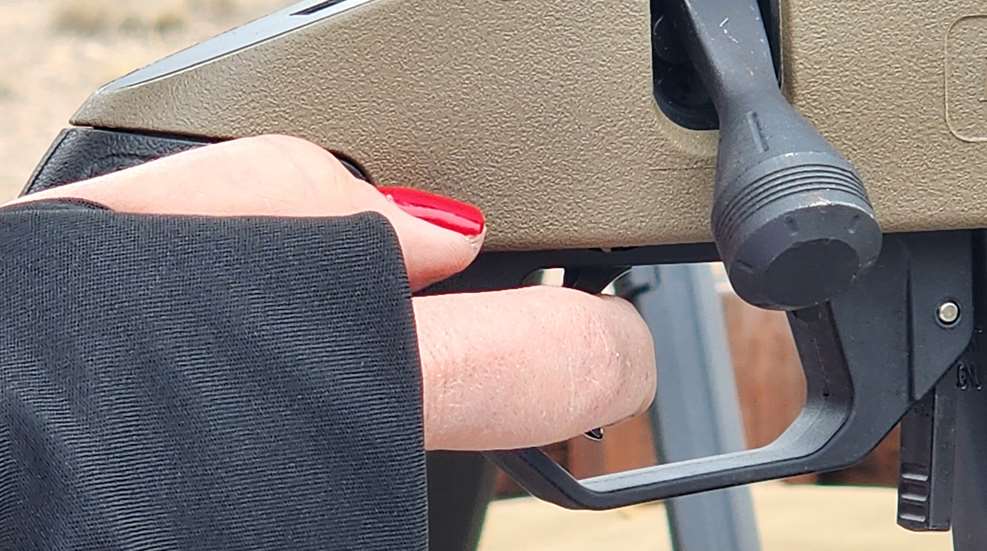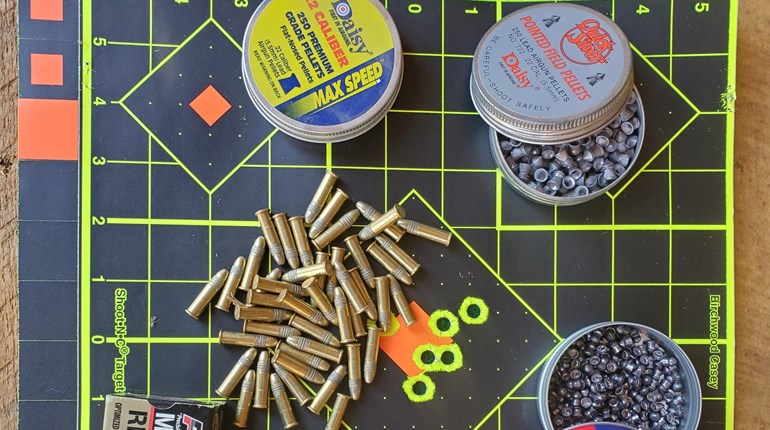
Good shooting isn’t just about what happens before and while you squeeze the trigger. What happens after the trigger squeeze matters, too, and you’ve heard this referred to as follow-through. A solid follow-through is important in any kind of rifle shooting and even matters to pistol shooters to an extent, but where it really becomes vital is in long-range precision rifle shooting. A poor or non-existent follow-through will have a greater and greater effect on point-of-impact the farther you are shooting.
There are three things you need to consider when it comes to a good follow-through.
Dwell Time
A shot happens so quickly that it’s easy to forget there is an ever-so-brief moment of time when the projectile is traveling down the muzzle. What you do in that fraction of a second can impact where the projectile goes—move the gun while the bullet is still moving down the barrel, and you change where the bullet is heading. It’s not enough time for us to consciously register that it’s happening, so we must build good subconscious habits to keep us from screwing things up before our brain even realizes we’re doing it.
The most important thing you can do to account for dwell time is to be still. The less you move, the lower the chances you will twist, shake, bump or otherwise move the muzzle while the bullet is still in it. Being still includes executing a compressed (not long and drawn out), clean, smooth trigger pull—not a jerk—that’s straight back, not torqued to one side or another. This is part of the reason long-range shooting instructors will have you lay the thumb of your shooting hand pointed straight out along the top or side of the grip rather than wrapping your thumb around it as you would when hunting. Wrapping introduces torque (twisting) to the gun before and after the shot.
Executing the shot at your natural respiratory break—at the bottom of one breath before you begin the next inhale, but not holding your breath in order to do so—also helps keep your body still.
Recoil Management
Being as still as possible during and after the shot also includes managing recoil. Guns move during recoil, and they move you, too. You will feel the recoil before the bullet has left the muzzle, so minimizing this movement on both ends will help that dwell time be less of a factor. This is especially important on lightweight guns that don’t have as much integral weight to “soak up” their own recoil.
If you’re using a bipod, loading it by leaning slightly into the feet of the bipod, anchoring them firmly into the ground or your mat rather than just sitting on top of it, will help keep the gun stable. You also need to stabilize your body as much as you can. Prone is the most stable shooting position because it offers the most body-to-ground contact, so use it if you’re able.
If you have the opportunity, use a front and a rear rest, or use your hand as a rear rest. Practice your stance and position so that prone feels natural—you want little to no muscle tension in your body when you are shooting. Using your bones, not your muscles, to support yourself and the gun will help you control recoil. If you have to pull the gun into your shoulder to get a good sight picture, you’ll have to use muscle tension to keep it there. Keep shifting your position until you can see clearly through the scope in a comfortable shooting position that allows all of your muscles to relax. Pushing, pulling, gripping, twisting or craning are all forms of muscle tension you should seek to eliminate.
When you think you’ve got a comfortable shooting position and your crosshairs are on the target, and you feel like you’re ready to shoot, close your eyes and take a couple of deep breaths. Are you still on target when you open your eyes? Good. You’ve found your natural point of aim, and you’re ready to shoot. If everything shifted while your eyes were closed, you’ve still got tension somewhere. Keep shuffling your body around until you get to your natural point of aim, because that’s where recoil is best managed.
Maintain Control
Staying in control of as many variables as possible through the whole shot is what good follow-through is all about. Stabilizing your body as mentioned above will help you with this. Focus hard on your sight picture, focusing on the reticle (not the target), and challenge yourself mentally to keep that sight picture through the whole shot. It takes some time for new shooters to learn to trust the gun and the recoil so you don’t instinctively close your eyes at the shot. Practice this, working on keeping your eye on target and maintaining the sight picture throughout and after the shot. Look for the hit through your scope—don’t lift your head off the gun to look over it and see what’s happening. Never losing that sight picture is the ultimate goal, and if recoil is managed really well, it is often possible. If it’s not possible, you want to reacquire a proper sight picture as quickly as you’re able.
That said, you don’t want to jerk the gun back into position in order to get your sight picture back. You shouldn’t have to (if you do, you probably need to work on recoil management some more), but getting into the sloppy habit of moving yourself or the gun immediately after the shot can eventually lead to you moving during the shot or during the dwell time in anticipation. If you have properly stabilized your body and executed a good shot, reacquiring the sight picture should involve very little movement.
A good, smooth, compressed trigger pull like mentioned above will also help you maintain control, but the pull isn’t the end. Keep the trigger pressed to the rear for a second after the shot to minimize the movement you’re transferring to the gun during dwell time. This feels unnatural, as we tend to pull the trigger and let our finger fly forward off of it, so you’ll need to practice this at the range. Spend some time squeezing the trigger and keeping it pressed to the rear for an exaggerated amount of time—at least until you reacquire your sight picture. You won’t have to hold the trigger back this long in the field, but deliberate and exaggerated practice will build the habit until it feels natural for you.
Good follow-through is all about minimizing movement during dwell time. You do that by managing recoil effectively, stabilizing your body, executing a good shot, and maintaining control over every physical aspect of the shot process. The less of an effect your body has on the shot, the more accurately you will shoot.














































